
KJ intern Codi Hauka visited the MIHO MUSEUM for the press preview of their latest exhibition: Discovering Nagata Yūji, Unsung Makie Master, on until July 15.
Makie (蒔絵) is the craft of using gold, silver and other metal powders to decorate lacquered objects that include everything from sake goblets to calligraphy boxes. It was developed and flourished throughout the Heian (794-1185) and Edo periods (1603-1868) in part thanks to prominent artists and institutions practicing the art form, such as famed painter Ogata Kōrin of the Rinpa 琳派 school. This particular exhibit aims to document the work of the talented yet relatively unknown artist Nagata Yūji, who produced works in Kyoto and Osaka during the middle of the Edo period. Codi shares her thoughts on the exhibit, below.
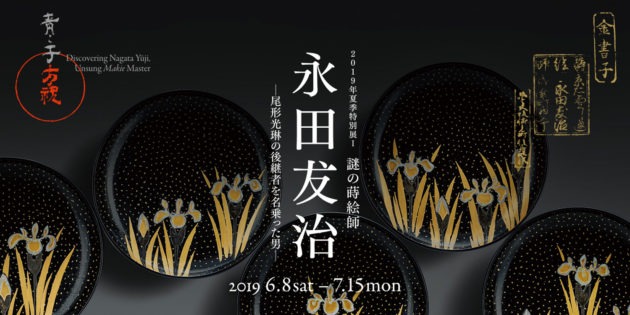
The Miho Museum’s exhibition of Edo period makie lacquer artist Nagata Yūji is not only impressive in that it brings together a remarkably pristine array of the artist’s work, but because it also represents a significant advancement in documenting the history of the craft in Japan. The catalyst for this collection was the desire to better illuminate the largely unknown career of Nagata, stewarded by the researcher Iwai Tsugio. By bringing together over 80 pieces of Nagata’s works from across museums, institutions, and private collectors, this concerted effort aims to act as a starting point to produce a firmer chronology and information about the artist’s work and life.
Nagata’s makie works and past are of interest for several reasons. For one, he modeled his style after the renowned makie master Ogata Kōrin (a pioneer of Rinpa style art). Nagata worked under the artist name of “Seiseishi”, a reference to Kōrin’s artist’s name of Sesei, positing himself as the master’s disciple despite never having met or trained with Kōrin. Nagata also signed many of his pieces – unusual for artists of the time period – demonstrating a boldness and confidence in the quality of his work. Additionally, his art showcases a unique willingness to embrace innovative approaches to makie lacquer work, utilizing different metals, textures, and techniques to produce unique hues, shapes, and imagery; he developed what is known as the “Yūji-age” raised lacquer technique, and often used lead kanagai (metal inlay) and hakeme-nuri (brush-marked lacquering) to distinguish his art. Yet despite his apparent efforts to assert his individual brand and identity, little is actually known about Nagata, including the dates of his birth and death.
This exhibit explores that mystery by showcasing the impressive art he produced across sake cups, picnic sets, and bowls, through designs that simultaneously simple and complex, drawing on the Rinpa aesthetic while using enterprising methods. This beautifully-curated collection presents a more holistic image of Nagata the artist, in thanks to the collective effort to further discoveries about this enigmatic makie master.
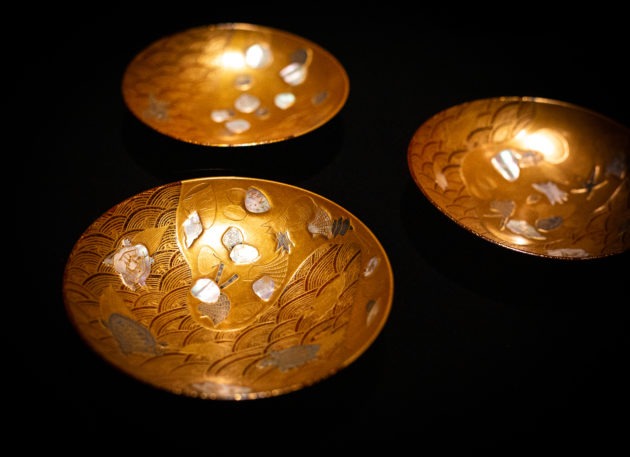
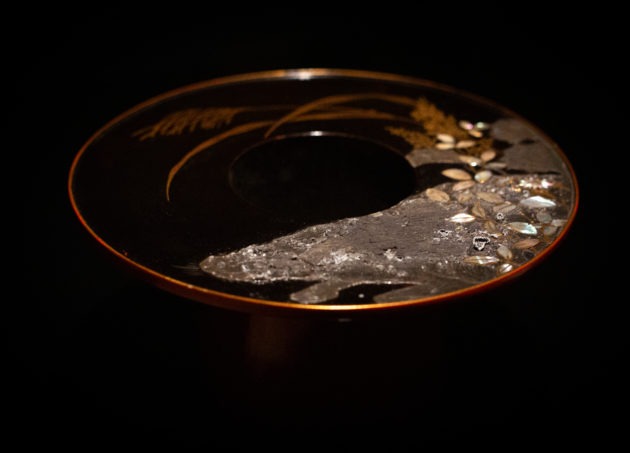
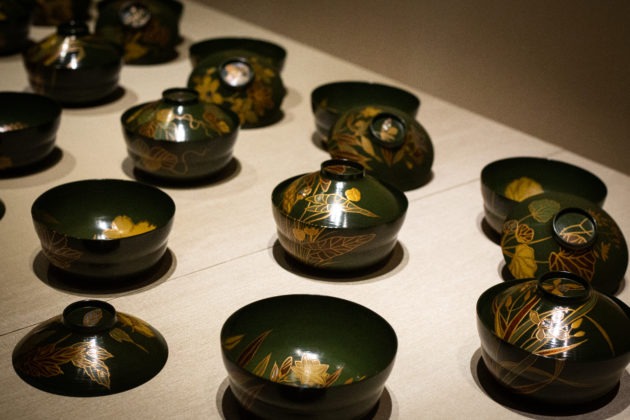
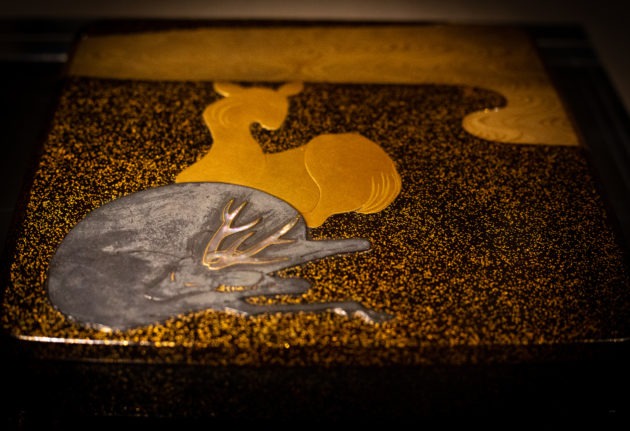
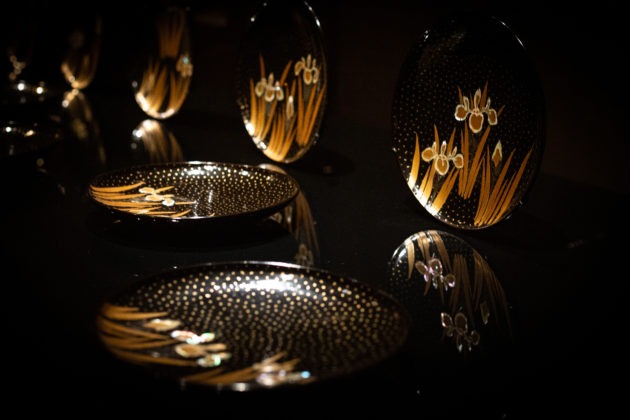

www.codihauka.com
Photos by Codi Hauka